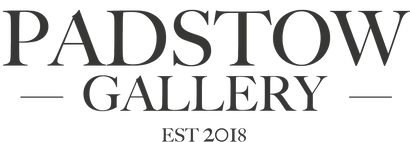Artist statement
View all
James Oughtibridge creates bold and striking forms in black and white clay often on a dramatic scale. Inspiration comes from the stunning Yorkshire Pennine landscape where his studio is situated.
The surrounding landscape is characterised by river valleys, hills, fells, mountains, high edges and valleys. The contour of this scenery is ever present and always inspiring. When mist and fog descend, it transforms the curves and valleys of the land into a monochromatic palette, where texture is prominent. These natural elements of texture, beauty and form are conveyed with each unique sculpture he creates.
Artist Bio
Inspiration for Oughtibridge’s sculptures comes from many elements, but the biggest inspiration is the stunning Yorkshire Pennine landscape in the North of England, where his studio is situated. The landscape that surrounds him is characterised by river valleys, hills, fells, mountains, high upland plateaus and edges. The contours of this scenery is ever present and always inspiring. When mist and fog descend (very often!), it transforms the undulations of the land into a monochrome palette, where texture is prominent. These natural elements of curves, textures and form are conveyed with each unique sculpture Oughtibridge creates.
Oughtibridge first discovered clay after leaving high school, when he went to study an Art foundation course at Dewsbury Art College. He had a two week period of working in the ceramics department with renowned Raku Ceramist David Roberts and was immediately drawn to clay as a material. Oughtibridge loved how versatile the clay was and was immediately hooked. Later, upon graduation from Loughborough and then the Royal College of Art in 2001, Oughtibridge set up a studio in London for several years before returning to his native Yorkshire in 2005. Being brought up close to the Yorkshire Sculpture Park has been a gift and an education from a very young age. The aesthetic of Barbara Hepworth‘s work is almost ingrained in him, as though it were the basis of his consciousness of beautiful texture, proportion, line and form.
The work has always had an element of ambiguity to it and a dramatic scale from the offset. He has always strived to create bold, dramatic work that leaves the viewer wondering what it is made of and how it was made. Sharp lines and curved planes have been prominent features of the work from the start. Sculptures are created using multiple curved sections of clay that are bonded together in stages when the clay is leather hard. This allows the sections to stand up, without collapse. Many hours are spent building the pieces, but the time consuming part is the refining of the surfaces and the drying and firing which can take weeks, sometimes months for the largest forms.
Oughtibridge has taken years to perfect his individual style and unmistakable sculptural forms. He works with individual clients, interior designers, collectors, museums and galleries on an international level. Although he has achieved success, the respect of the art world and popularity within contemporary interiors, Oughtibridge still has ambitions and goals he is working towards. Future projects that are currently underway see a move into Bronze sculpture and some more monolithic, large scale pieces.









